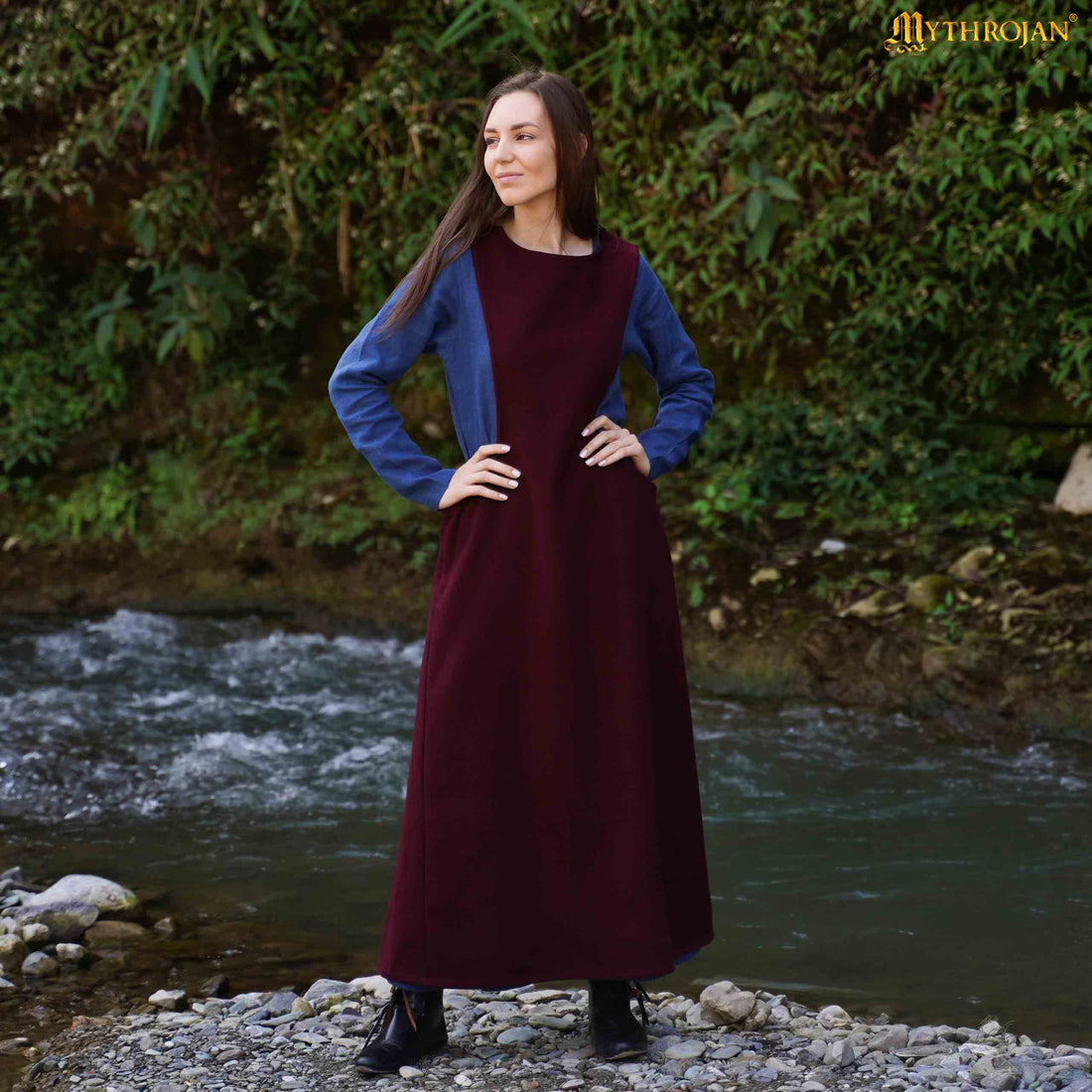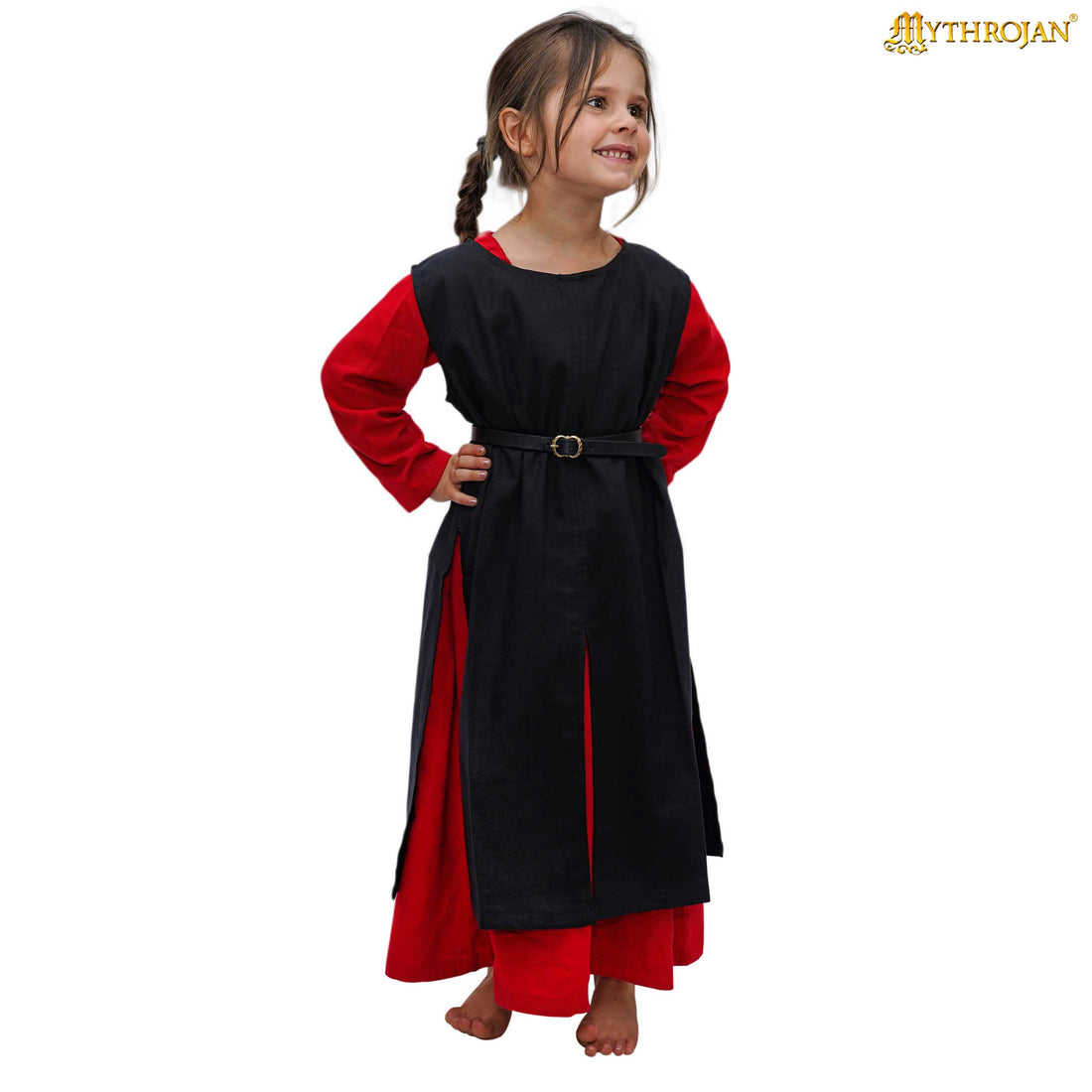9 products
-

 Mythrojan Medieval CANVAS Tabard 100% cotton Medieval Viking Knight SCA LARP Surcoat, BrownMythrojan Medieval CANVAS Tabard 100% cotton Medieval Viking Knight SCA LARP Surcoat, Brown
Mythrojan Medieval CANVAS Tabard 100% cotton Medieval Viking Knight SCA LARP Surcoat, BrownMythrojan Medieval CANVAS Tabard 100% cotton Medieval Viking Knight SCA LARP Surcoat, Brown- Regular price
-
$39.99 - Regular price
-
- Sale price
-
$39.99
Quick view
-

 Mythrojan Medieval KIDS TABARD Knight Surcoat Medieval Events LARP SCAMythrojan Medieval KIDS TABARD Knight Surcoat Medieval Events LARP SCA
Mythrojan Medieval KIDS TABARD Knight Surcoat Medieval Events LARP SCAMythrojan Medieval KIDS TABARD Knight Surcoat Medieval Events LARP SCA- Regular price
-
$29.99 - Regular price
-
- Sale price
-
$29.99
Quick view
-

 Mythrojan Medieval Cotton Canvas Tabard Medieval Viking Knight SCA LARP SurcoatMythrojan Medieval Cotton Canvas Tabard Medieval Viking Knight SCA LARP Surcoat
Mythrojan Medieval Cotton Canvas Tabard Medieval Viking Knight SCA LARP SurcoatMythrojan Medieval Cotton Canvas Tabard Medieval Viking Knight SCA LARP Surcoat- Regular price
-
$39.99 - Regular price
-
- Sale price
-
$39.99
Quick view
-

 Lady Catherine Sleeveless Surcoat: Authentic 14th-15th Century Medieval Garb for Reenactment and LARPLady Catherine Sleeveless Surcoat: Authentic 14th-15th Century Medieval Garb for Reenactment and LARP
Lady Catherine Sleeveless Surcoat: Authentic 14th-15th Century Medieval Garb for Reenactment and LARPLady Catherine Sleeveless Surcoat: Authentic 14th-15th Century Medieval Garb for Reenactment and LARP- Regular price
-
$74.99 $79.99 - Regular price
-
- Sale price
-
$74.99 $79.99
Quick view
-

 Ingrid the Shieldmaiden Viking Woolen Dress with Diamond Twill Decorative Borders : Ideal for Viking, Anglo-Saxon & Early Medieval Events, LARP, SCA & ReenactmentIngrid the Shieldmaiden Viking Woolen Dress with Diamond Twill Decorative Borders : Ideal for Viking, Anglo-Saxon & Early Medieval Events, LARP, SCA & Reenactment
Ingrid the Shieldmaiden Viking Woolen Dress with Diamond Twill Decorative Borders : Ideal for Viking, Anglo-Saxon & Early Medieval Events, LARP, SCA & ReenactmentIngrid the Shieldmaiden Viking Woolen Dress with Diamond Twill Decorative Borders : Ideal for Viking, Anglo-Saxon & Early Medieval Events, LARP, SCA & Reenactment- Regular price
-
$129.99 $139.99 - Regular price
-
- Sale price
-
$129.99 $139.99
Quick view
-

 Lady Catherine Sleeveless Surcoat: Authentic 14th-15th Century Medieval GarbLady Catherine Sleeveless Surcoat: Authentic 14th-15th Century Medieval Garb
Lady Catherine Sleeveless Surcoat: Authentic 14th-15th Century Medieval GarbLady Catherine Sleeveless Surcoat: Authentic 14th-15th Century Medieval Garb- Regular price
-
$79.99 $89.99 - Regular price
-
- Sale price
-
$79.99 $89.99
Quick view
-

 Mythrojan Medieval KID TABARD Knight Surc oat for children Medieval Events LARP SCA, Brown , SIZE: KidsMythrojan Medieval KID TABARD Knight Surc oat for children Medieval Events LARP SCA, Brown , SIZE: Kids
Mythrojan Medieval KID TABARD Knight Surc oat for children Medieval Events LARP SCA, Brown , SIZE: KidsMythrojan Medieval KID TABARD Knight Surc oat for children Medieval Events LARP SCA, Brown , SIZE: Kids- Regular price
-
$29.99 - Regular price
-
- Sale price
-
$29.99
Quick view
-

 Mythrojan Medieval KID TABARD Knight Surc oat for children Medieval Events LARP SCA, Black , SIZE: KidsMythrojan Medieval KID TABARD Knight Surc oat for children Medieval Events LARP SCA, Black , SIZE: Kids
Mythrojan Medieval KID TABARD Knight Surc oat for children Medieval Events LARP SCA, Black , SIZE: KidsMythrojan Medieval KID TABARD Knight Surc oat for children Medieval Events LARP SCA, Black , SIZE: Kids- Regular price
-
$29.99 - Regular price
-
- Sale price
-
$29.99
Quick view
-

 Mythrojan Medieval CANVAS Tabard 100% cotton Medieval Viking Knight SCA LARP Surcoat, BlackMythrojan Medieval CANVAS Tabard 100% cotton Medieval Viking Knight SCA LARP Surcoat, Black
Mythrojan Medieval CANVAS Tabard 100% cotton Medieval Viking Knight SCA LARP Surcoat, BlackMythrojan Medieval CANVAS Tabard 100% cotton Medieval Viking Knight SCA LARP Surcoat, Black- Regular price
-
$39.99 - Regular price
-
- Sale price
-
$39.99
Quick view
The Symbolism Behind Medieval Tabards and Surcoats
In the realm of medieval history, few garments evoke as much intrigue and fascination as the tabard and surcoat. These iconic pieces of clothing, once essential to the medieval wardrobe, are steeped in rich history and functionality, symbolizing status, allegiance, and practicality on the battlefield.
Tabard Clothing
Tabard clothing, recognizable by its simple yet functional design, was a staple in medieval Europe. Typically, a tabard was a loose-fitting tunic with open sides and a belt or girdle. Originally worn by peasants and laborers for its ease and comfort, the tabard evolved into a significant garment for knights and heralds.
Knights donned the tabard over their armor, emblazoned with their coat of arms, which allowed for easy identification on the battlefield. This practical feature was crucial in the chaotic fray of medieval combat, where distinguishing friend from foe could mean the difference between life and death. Heralds, too, wore tabards, often adorned with the emblems of the noble houses they served. This not only signified their role but also granted them protection under the codes of chivalry.
The Tabard in Medieval Society
Beyond its battlefield utility, the tabard played a vital role in medieval society. For common folk, it was a garment of necessity, providing ease of movement for daily tasks. For the nobility and their retinues, the tabard became a canvas for displaying heraldic symbols, a powerful visual language that communicated lineage, allegiance, and social standing.
The medieval tabard’s simplicity in construction belied its significance. Made from wool or linen, it was both practical and durable. Over time, more elaborate versions appeared, crafted from finer materials and adorned with embroidery, becoming a symbol of prestige and power.
Medieval Surcoat
Closely related to the tabard, the medieval surcoat was another quintessential garment of the era. Originally a simple overgarment, the surcoat evolved into a long, flowing robe worn over armor, offering both protection and a canvas for heraldic display.
The surcoat, typically sleeveless, was slit at the front and back for ease of riding. It provided an additional layer over the armor, shielding it from the elements and reducing the heat absorbed by the metal. In battle, the surcoat’s heraldic emblems played a crucial role in the identification of knights, similar to the tabard.
Surcoat Medieval
In the realm of medieval fashion, the surcoat was a versatile garment. Off the battlefield, it was worn by both men and women, often richly decorated to reflect the wearer's status. Noblewomen’s surcoats, in particular, were elaborate, made from luxurious fabrics and adorned with intricate embroidery and fur trims. These garments not only showcased wealth but also adhered to the stringent fashion norms of medieval society.
The surcoat’s evolution was also marked by its adaptation to the changing needs of warfare and fashion. By the late medieval period, it became more form-fitting, reflecting the shift towards plate armor. This transformation highlighted the garment's dual role as both a practical piece of clothing and a symbol of status and identity.
Medieval Surcoats
The legacy of medieval surcoats extends beyond their practical use. They are emblematic of the chivalric ideals that defined the medieval era. Knights wearing surcoats emblazoned with their coats of arms represented not just their personal valor but also the virtues of bravery, loyalty, and honor.
The surcoat’s heraldic function was pivotal in tournaments and ceremonies, where pageantry played a significant role. The vivid colors and intricate designs of the surcoat made it a focal point in these events, reinforcing the knight's identity and status.
The Everlasting Legacy of Tabard and Surcoat
Today, the tabard and surcoat continue to captivate the imagination. Their historical significance and visual appeal make them popular in historical, films, and literature. These garments offer a tangible connection to the past, allowing us to explore the lives and identities of those who wore them.
The tabard and surcoat are more than mere clothing; they are symbols of a bygone era, rich in history and tradition. Their enduring legacy is a testament to the intricate tapestry of medieval life, where every garment told a story of identity, allegiance, and social hierarchy. As we dive deeper into the past, these iconic pieces remind us of the enduring allure and complexity of medieval culture.
FAQs for Medieval Surcoats and Tabards:
What is a medieval surcoat?
A medieval surcoat is an outer garment worn over armor or regular clothing, traditionally used by knights to display their coat of arms or symbol. It typically features an open-sided design, allowing for freedom of movement during combat. At Mythrojan, our surcoats are inspired by authentic historical designs, perfect for reenactments or medieval-themed events.
What materials are used in medieval surcoats?
Medieval surcoats were commonly made from wool, linen, or even silk for nobility. At Mythrojan, we use high-quality, durable materials such as cotton, linen, and wool blends, ensuring comfort and authenticity. Our selection is carefully crafted to replicate the historical look and feel of medieval garments while providing modern wearability.
How were tabard medieval surcoats used in medieval times?
Tabards, a type of surcoat, were primarily worn by knights and soldiers over their armor to distinguish their allegiance or rank. They were often emblazoned with a knight’s coat of arms or the emblem of their lord. In battles or tournaments, tabards allowed warriors to be identified easily by allies and enemies alike. Mythrojan’s tabards follow these traditional designs, ideal for reenactments or cosplay.
How do I choose the right size for a medieval tabard clothing?
To select the perfect size for your Mythrojan tabard, measure your chest circumference and consult our size chart. Most tabards are designed to fit over armor, so consider a slightly larger size if you'll be wearing it over bulky clothing or armor. Our tabards come with adjustable features such as side ties to ensure a comfortable fit for various body types.
What is the difference between a surcoat and a tabard?
A surcoat typically refers to a longer, more elaborate garment that might extend to the knees or lower and could be worn by both men and women in medieval times. A tabard is shorter and more functional, commonly used by soldiers and knights to cover armor. Mythrojan offers both surcoats and tabards to suit your historical or reenactment needs.
Are Mythrojan medieval surcoats suitable for reenactments?
Absolutely! At Mythrojan, we take pride in offering medieval surcoats and tabards that are not only historically inspired but also durable and functional for medieval reenactments, LARP events, or Renaissance fairs. Our designs are meticulously crafted to offer the best combination of authenticity and comfort.
How do I care for my Mythrojan medieval surcoat?
To maintain the quality of your Mythrojan surcoat, we recommend spot cleaning or hand washing in cold water with mild detergent. Avoid using bleach, and air-dry the garment to preserve its material and color. Always refer to the care instructions on the product label for the best results.



















